I posted a picture earlier today on Twitter and Facebook about the latest RAID setup I’m building here at the facility, and ended up getting some questions about it, so I figured I’d post a quick blog post on what hardware I’m using and how I put it together.
Building your own RAID is a lot easier than in year’s past, and quite affordable too. Not to mention it’s fun to get your geek on. I’ve been using HighPoint RAID hardware on Mac OSX and so far it’s been 100% completely rock solid. Oddly enough, some of the product info on HighPoint’s website doesn’t reference Mac OSX support alongside their Window, Linux and FreeBSD info. But rest assured, it’s been working flawlessly on our MacPro systems (at least on Snow Leopard, and am now just getting it installed on Lion).
I’m using a standard, off-the-shelf 9-bay hard disk drive tower that you can just about get anywhere (just make sure it’s got a Centronics Mount Compliant hole to fit the storage controller board). It uses a standard 300-watt power supply, which is enough power needed to run the eight Seagate drives, all of the fans, and the RAID controller card. The only “mod” I did to the case was to replace the rear screws that keep the outer casing on with blue-anodized thumb screws for easier/faster disassembly.
For this setup, I’m using 2TB drives, but it’s compatible with 3TB drives as well. I’m using RAID 5, which in the end gives me 14TB of storage from 16TB space of original space. The RocketRAID card I’m using supports RAID 0, 1, 5, 6, 10, 50, and JBOD. It also supports two physical array units (each unit supporting a maximum of eight drives), so you could have 16 drives at 3TB each for a total of 48TB. Even though the RAID 5 setup gives me some protection, I still keep any media I want on a backup/archive Drobo Pro system.
To setup your RAID, HighPoint supplies a little app that basically launches your web browser to a local URL on your workstation. The browser is basically the interface to setup and modify your RAID. It works well, but is a little sluggish to refresh in my opinion.
Here’s a breakdown of all the parts I’ve accumulated to get this together. Note that this setup is derived from an old setup that once housed eight 300GB drives, so I’ve added a few things along the way (not just the drives themselves).
- 9-bay hard drive tower with 300-watt power supply.
- Eight 2TB Seagate Barracuda hard drives (also supports 3TB drives).
- HighPoint RocketRAID 2722 PCIe controller card.
- HighPoint EJ220 storage controller device board.
- Adaptec internal mini-SASX4 SFF-8087 to 4-SATA fanout cables (X2).
- External mini-SAS to external mini-SAS (SFF-8088 to SFF-8088) cable.
- Quick-release trayless mobile hard drive rack with bottom fans
- Triple-fan hard drive cooling kit
- Six blue anodized computer case thumbscrews.
Here are some iPhone snapshots of my build along the way. I didn’t plan on writing a blog about the process and taking pictures of it, so these will have to do!
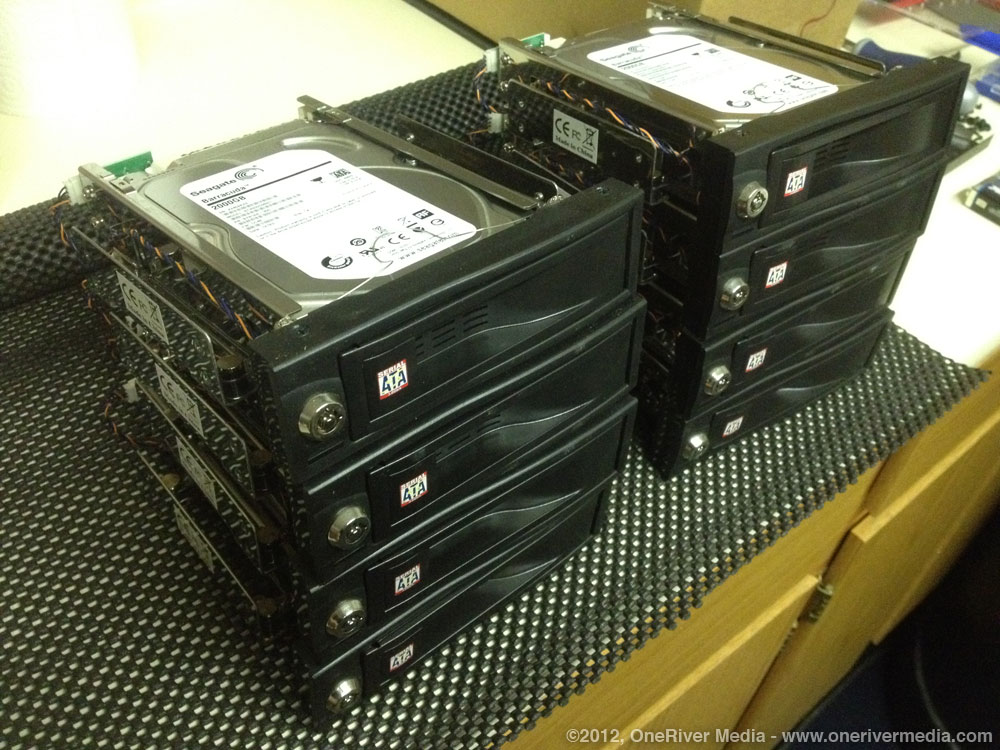
The original image that started the interest and turned this into a blog post! Bare Seagate hard drives in their trayless caddy holders. Much easier to replace bare drives like this than to screw them in and out.

Our break room doubles as our RAID installation room! All eight drives are loaded and ready for testing.
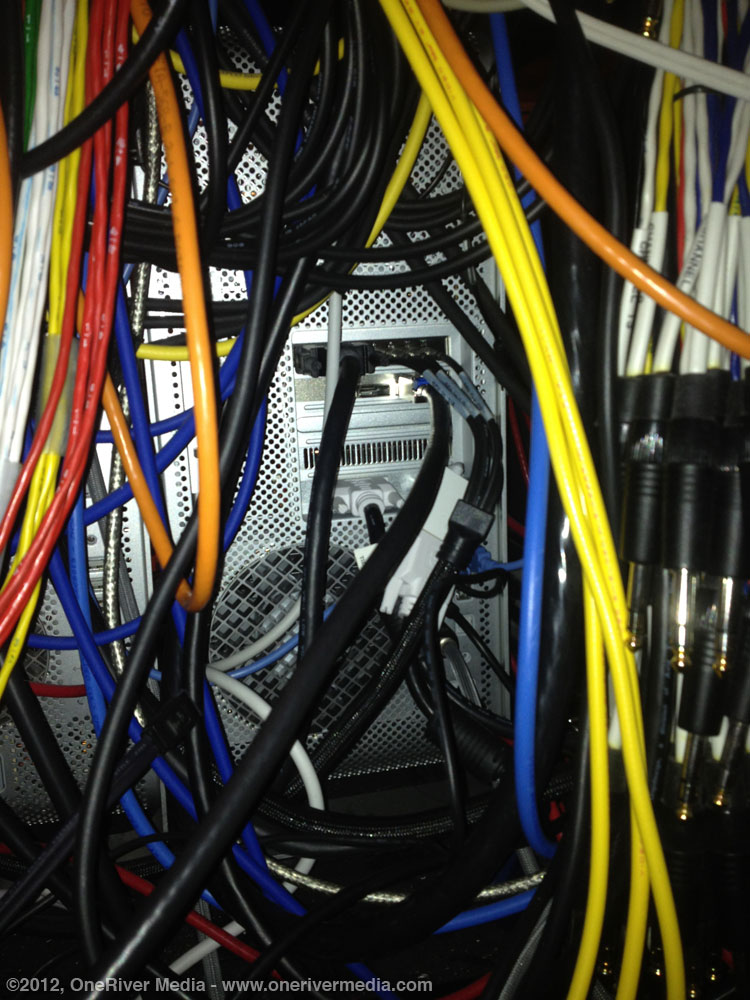
Hidden amongst the cabling is the HighPoint RocketRAID 2722 PCIe controller card beneath the AJA Kona card in the MacPro tower.
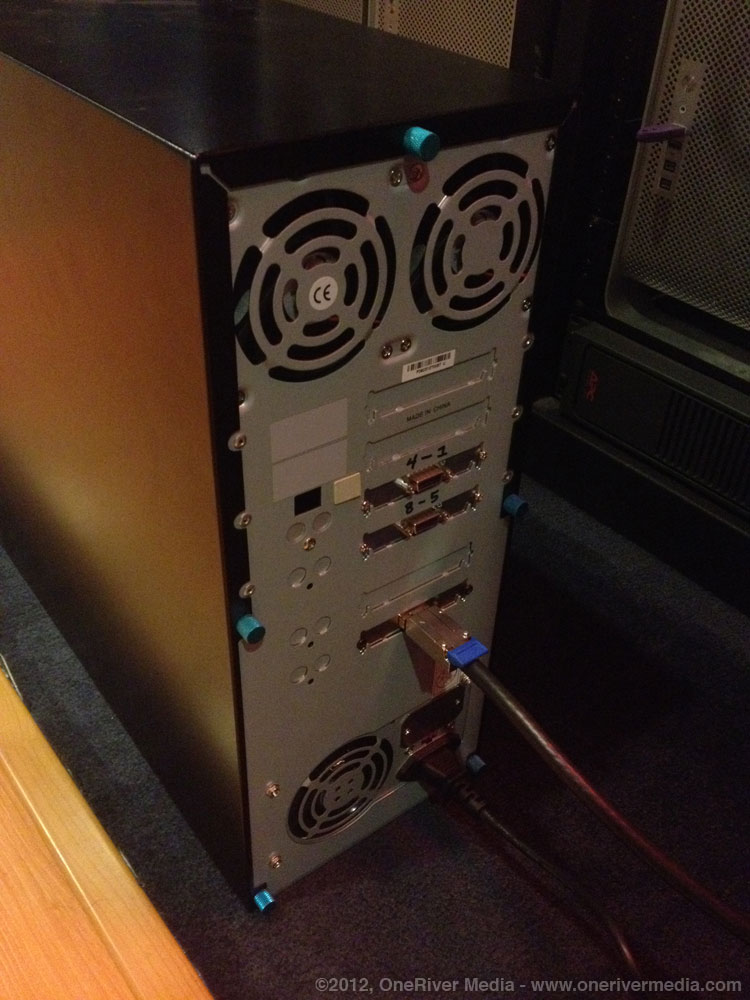
After initial testing, the enclosure was easily sealed back up with the thumb screws (can't recommend these enough!). Note the large fans to dissipate the heat (I recommend as many fans as you can fit in your enclosure to prolong hard drive life). The SFF-8088 cable is plugged in. Above that are a pair old eSata connections that are no longer used.
Share this post
Article © OneRiver Media, including applicable photographs. All rights reserved. Article and its contents shall not be copied or reprinted without the expressed written approval of OneRiver Media.
FCC Disclaimer - Links from this article might go to affiliate links to B&H and/or Amazon (not much different than the ads you see in YouTube ads, but more focused). Visiting these links (or buying products from the links) cost you nothing additional and may in turn help us pay for the cost of hosting these free articles we write. These articles take an enormous amount of time (in most cases, weeks and months) to research, draft, write, edit, rewrite, and shoot custom photography/video for. In no way do these affiliate links cover the cost of all of that, so any help these links can provide is a huge help to us to continue to offer free content to our readers.

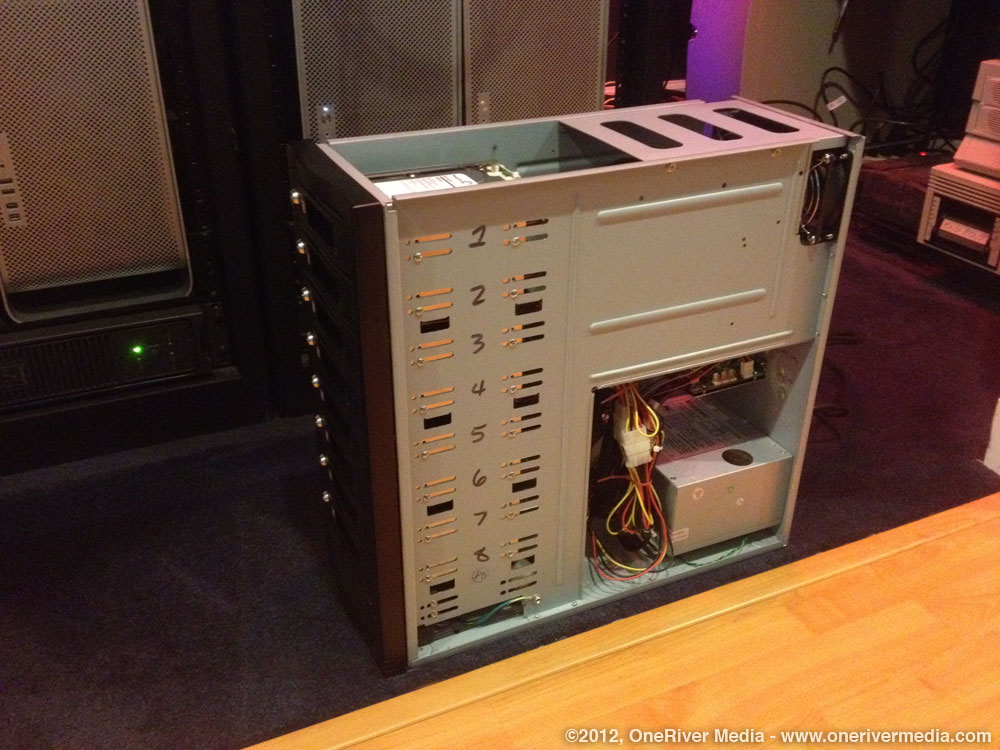
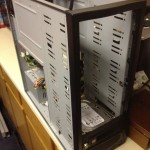
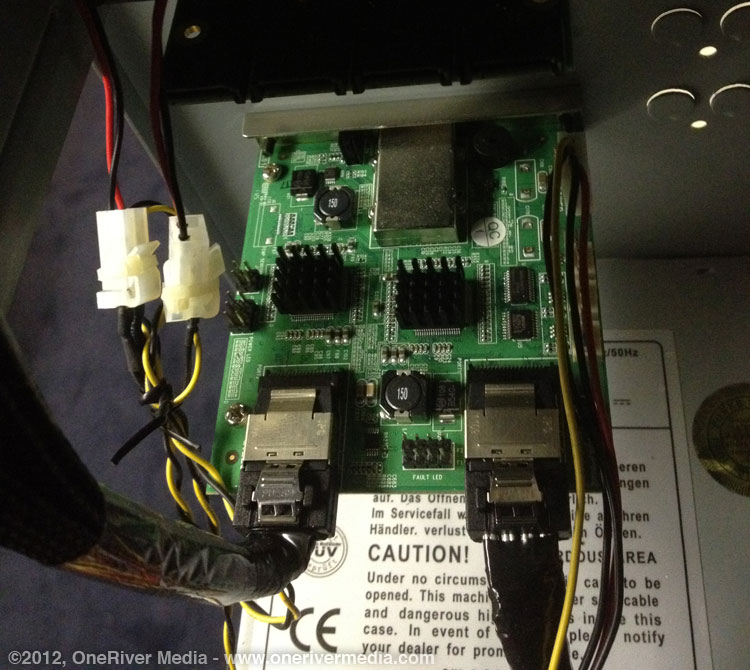
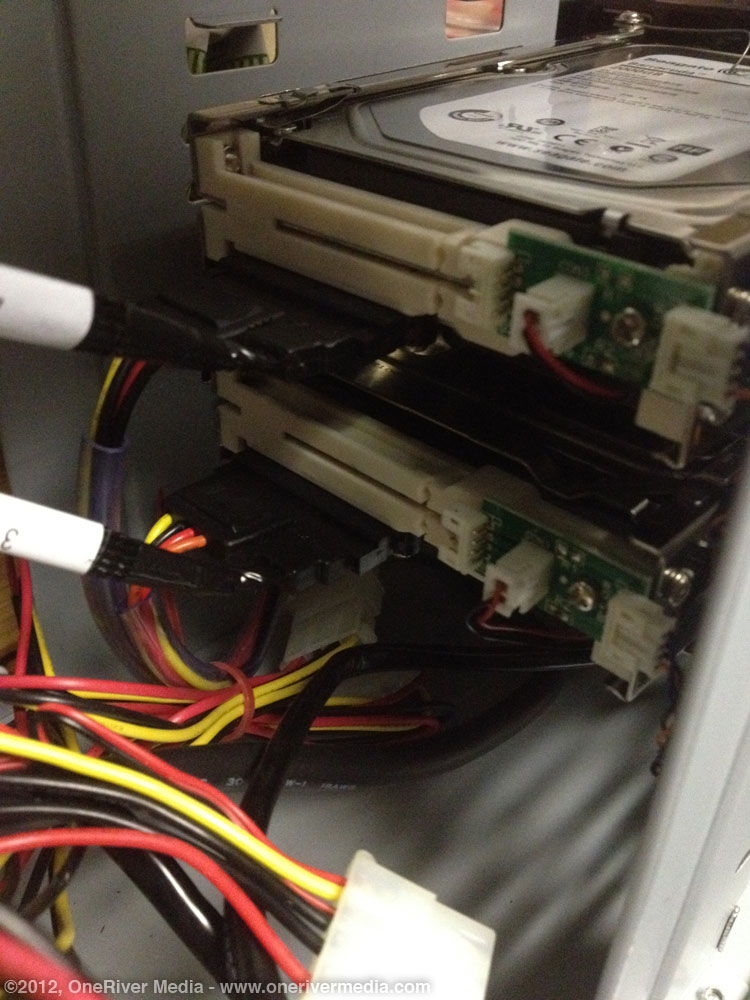
Comments 9
Amazing, I can’t wait to make one! What kind of speeds do you get? Did you consider bypassing the port multiplier to get a faster read/write (at the expense of the second sas port on your MacPro)?
Author
I’m not using the second port on the RocketRAID 2722 card at this time. Using the AJA System Test utility, with a setting of 1080HD 10-bit with an 8GB file size, I’m getting write and read speeds of about 800 MB/s.
I used your guide to build a similar RAID. Thanks! I don’t have a server closet so I may need to take a jigsaw to it & install 120mm quiet fans.
I like your design a lot. Very simple and easy to replicate inexpensively. In googling for the parts, I came across the following two items (http://www.amazon.com/HighPoint-Rocket-EJ240-SFF-8087-SFF-8088/dp/B005VC8CHK/ref=pd_rhf_sc_p_img_1 -and- http://www.pc-pitstop.com/sas_cables_enclosures/de350ss.asp), and immediately realized you could not-quite-but-almost double your density by using an EJ240 instead of a 220, and 3 5-into-3 backplanes. You lose the fan at the bottom — no room — but you end up with 15 x 3.5 inch drives in the same 9-bay case, and all still running off of the one SFF-8088 external port. Obviously a much larger power supply is needed, and you definitely want your RAID card to stagger-start the drives.
Author
Hi Tom. Yes, we actually did consider this, but in the end, an 8-drive system is good for that workstation (for now and the foreseeable future at least!). The nice thing is, if we do want to double it, we simply swap cards, add the other tower with matching drives, reformat, and we’re good to go! Our 8-disk RAID is still kicking along very well. Thanks.
HighPoint RocketRAID 2722 PCIe controller card support RAID 6 or not ?
According the link you given ( Amazon ) didn’t mention about RAID 6 …. why ??
Author
The Amazon page must not be up to date. The 2722 does in fact support RAID 6. Full support: 0, 1, 5, 6, 10, 50, JBOD. http://www.highpoint-tech.com/USA_new/rr272x_arch.htm
Hi…
what software do you use to run this NAS?
Author
We actually don’t need any software. The system uses a hardware RAID controller, so it’s totally plug-and-play. The hardware RAID controller does come with software to maintain the RAID system, but it’s the hardware controller itself that’s managing the RAID. And since it’s a direct RAID system, it’s actually not a NAS. Hope this helps!